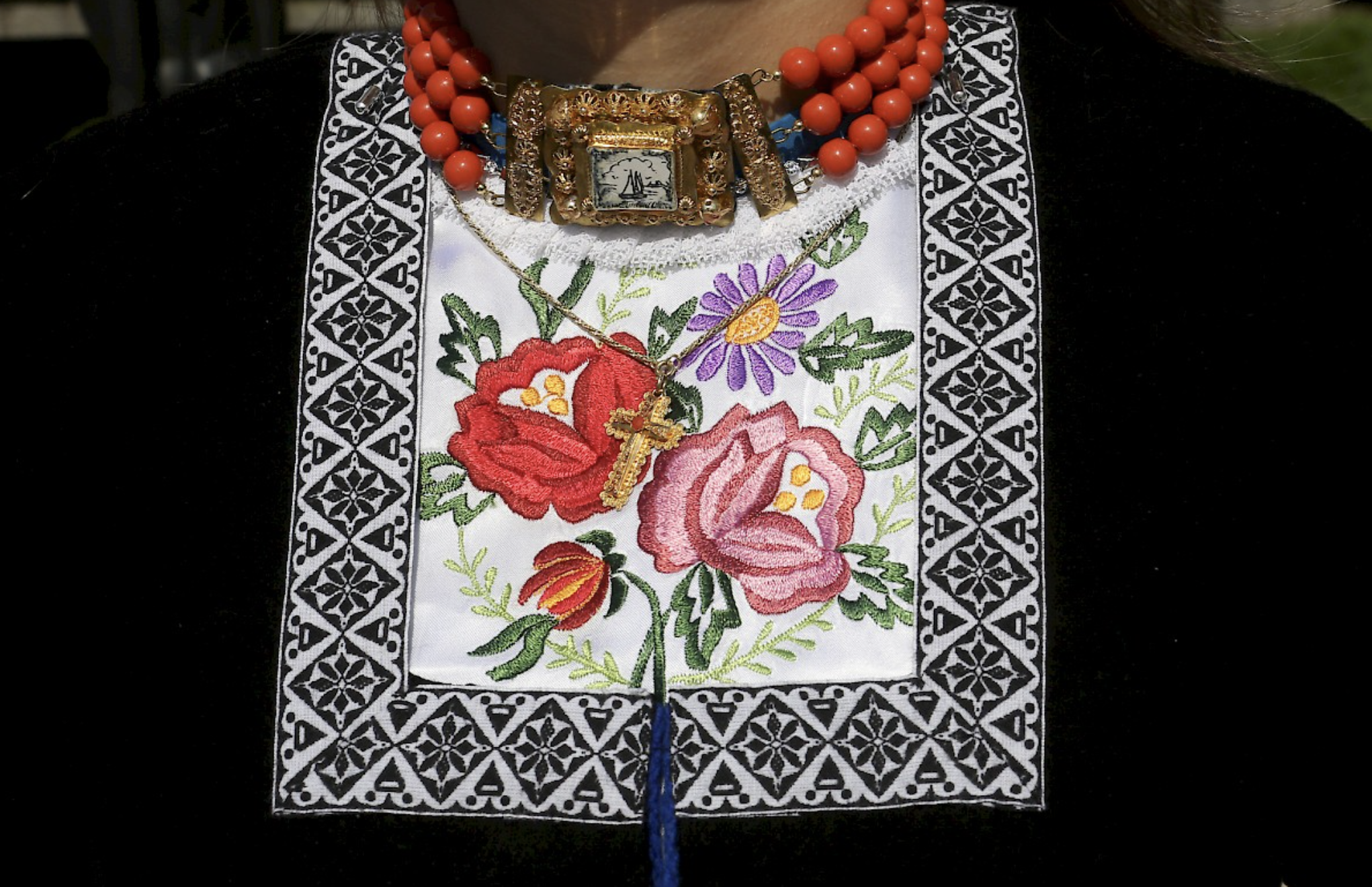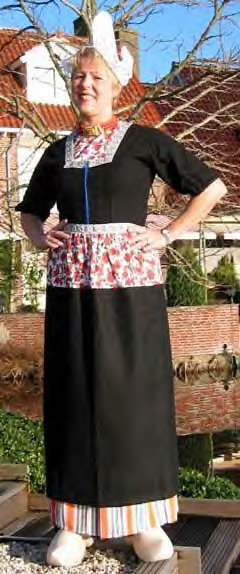
The traditional Volendam costume this doll is wearing has many characteristics that reflect the modest etiquette of the time from which it comes. Certain parts stand out, like the kraplap, the stockings and undergarments, the cap, and the overall coverage of the costume. The function of the karplaps is to cover a woman’s cleavage. Through this the costume is high-necked and in place of a woman’s cleavage, flower prints or embroideries are displayed (Costume of Volendam, 2011). This already shows the importance of coverage that is suggested and further represented through this costume.

The knee-long pants like undergarments are contemporary, today’s underwear is very different from the undergarments of these times. The hem of the undergarments meets the knee-high stockings, leaving no bare skin on a woman’s leg. Although the skirt and apron of the dress are around ankle length, the legs are additionally covered through those elements (Costume of Volendam, 2011). This of course has a lot to do with the fashion of the time and the clime in which the costume was worn. But it further adds to the underlying modesty that those costumes entail, and the doll further spreads.

